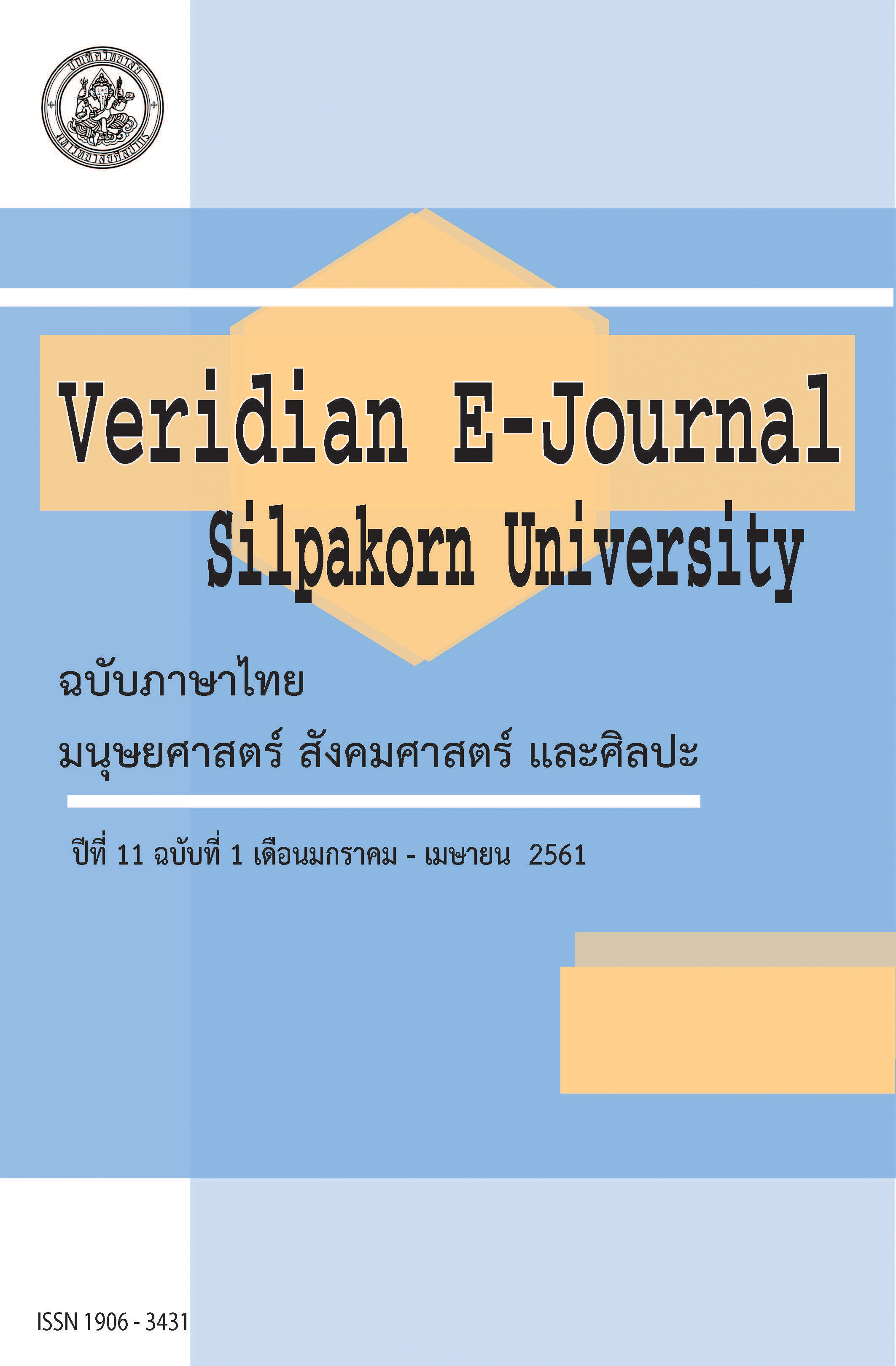ความสามารถในการคิดอย่างเป็นระบบของนักศึกษามหาวิทยาลัยเทคโนโลยีสุรนารี (Systematic Thinking Ability of Suranaree University of Technology’s Scholars)
Main Article Content
Abstract
การวิจัยนี้มีวัตถุประสงค์เพื่อ 1) ศึกษาความสามารถในการคิดอย่างเป็นระบบ (คิดวิเคราะห์ คิดสร้างสรรค์ และคิดเชิงประยุกต์ใช้) ของนักศึกษามหาวิทยาลัยเทคโนโลยีสุรนารี และ 2) เปรียบเทียบความสามารถในการคิดอย่างเป็นระบบของนักศึกษาที่มีอายุ ชั้นปี เพศ เกรดเฉลี่ยสะสม สำนักวิชา และประเภทการเข้าศึกษาแตกต่างกัน กลุ่มตัวอย่าง คือ นักศึกษาปริญญาตรีที่ศึกษาในปีการศึกษา 2558 คำนวณขนาดตัวอย่างโดยใช้สูตรของ Yamane ได้ขนาดตัวอย่าง 438 คน เลือกตัวอย่างโดยสุ่มแบบแบ่งชั้นภูมิ และใช้การเลือกแบบบังเอิญ เครื่องมือที่ใช้ในการเก็บรวบรวมข้อมูล คือ แบบบันทึกข้อมูลส่วนบุคคล และแบบวัดความสามารถในการคิดอย่างเป็นระบบที่ผู้วิจัยสร้างขึ้น แบ่งเป็น 3 ด้าน คือ ความสามารถด้านการคิดวิเคราะห์ ความสามารถด้านการคิดสร้างสรรค์ ความสามารถด้านการคิดเชิงประยุกต์ใช้ นำไปหาค่าดัชนีความตรงของเนื้อหา (Content validity index: CVI) แบบรายข้อ (Item-level CVI: I-CVI) ได้ค่าอยู่ในช่วง 0.66 - 1.00 และทั้งฉบับ (Scale-level CVI: S-CVI) 0.98 จากนั้นนำมาหาความเชื่อมั่น (Reliability) โดยการหาค่าสัมประสิทธิ์แอลฟาของคอนบราค (a-Cronbach Coefficient) ได้ค่าความเชื่อมั่น 0.75 สถิติที่ใช้วิเคราะห์ข้อมูล ได้แก่ ความถี่ ร้อยละ ค่าเฉลี่ยและส่วนเบี่ยงเบนมาตรฐาน เปอร์เซนไทล์ และการวิเคราะห์ความแปรปรวนพหุคูณ (Multivariate Analysis of Variance: MANOVA)
ผลการวิจัย พบว่า กลุ่มตัวอย่างส่วนใหญ่เป็นเพศหญิง อายุมากกว่า 20 ปีขึ้นไป กำลังศึกษาอยู่ชั้นปีที่3 เกรดเฉลี่ยสะสม 2.50–2.99 ศึกษาอยู่ในสำนักวิชาวิศวกรรมศาสตร์ และรับเข้าศึกษาด้วยวิธีโควต้า คะแนนความสามารถในการคิดอย่างเป็นระบบอยู่ในระดับปานกลาง เมื่อจำแนกเป็นรายด้านพบว่า ความสามารถในการคิดวิเคราะห์ ความสามารถในการคิดสร้างสรรค์ และความสามารถในการคิดเชิงประยุกต์ใช้อยู่ในระดับ ปานกลางทั้ง 3 ด้าน ผลการวิเคราะห์ความแปรปรวนหลายตัวแปรจำแนกตามคุณลักษณะส่วนบุคคล พบว่า การคิดอย่างเป็นระบบของนักศึกษาที่มีเพศต่างกัน เกรดเฉลี่ยสะสมต่างกัน เรียนในสำนักวิชาต่างกัน รับเข้าศึกษาด้วยวิธีต่างกันมีความแตกต่างกันอย่างมีนัยสำคัญทางสถิติที่ระดับ 0.05 ส่วนการคิดอย่างเป็นระบบของนักศึกษาที่มีอายุต่างกันและชั้นปีต่างกันมีความสามารถในการคิดอย่างเป็นระบบไม่แตกต่างกัน ผลการศึกษาช่วยให้ได้สารสนเทศเพื่อการปรับปรุงหลักสูตรเพื่อเพิ่มทักษะการคิดอย่างเป็นระบบ โดยเฉพาะด้านการคิดวิเคราะห์และการคิดเชิงประยุกต์ใช้
This study aimed to 1) study the systematic thinking ability (STA) of Suranaree University of Technology’s Scholars and 2) compare the STA of scholars at the age, year of study, sex, cumulative GPA, Institute and type of admission. Using stratified random sampling method, the sample of this study comprised of 438 undergrad students, academic year 2015. Research instruments consisted of the demographic data form and STA questionnaires developed by the researchers consist of 3 domain; analytical thinking, creative thinking and practical thinking. Using alpha Cronbach’s Coefficient, content validity index (CVI) was examined for both item level (I-CVI) and scale level (S-CVI). The I-CVI ranged between 0.66 and 1.00, and the S-CVI was at 0.75. Descriptive statistics such as frequency, percentage, mean standard deviation, percentile and Multivariate Analysis of Variance (MANOVA) were used to analyze the data.
The majority of the samples were: females, average age at 20 years of age and above, at the third year of the study, had Grade Point Average (GPA) between 2.50 and 2.99, largely studying at Engineering Institute, and enrolled to study by quota method. The findings illustrated that on average, the sample’s STA wat at moderate level. When evaluated by domain, the analytical thinking, creative thinking, and practical thinking were reported at moderate level. Using MANOVA, the findings showed that the STA of students who had sex, GPA, major of study, and enrolling method, were statistically significant different at p < 0.05. Additionally, there were no significant different of students’ STA whose age and year of study were different. The results of this study help to improve the curriculum to enhance the systematic thinking skills, especially in the analytical thinking and practical thinking.

